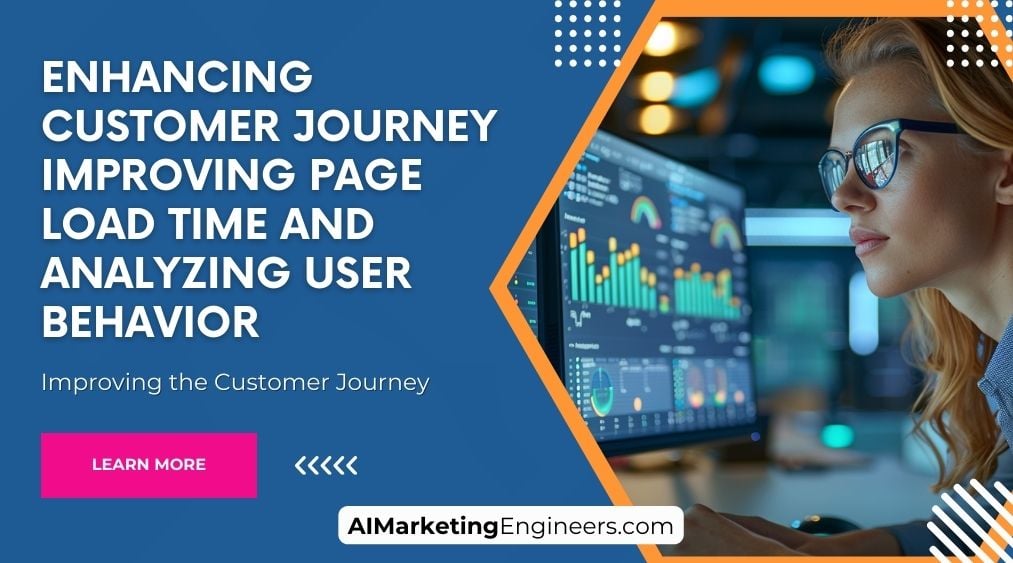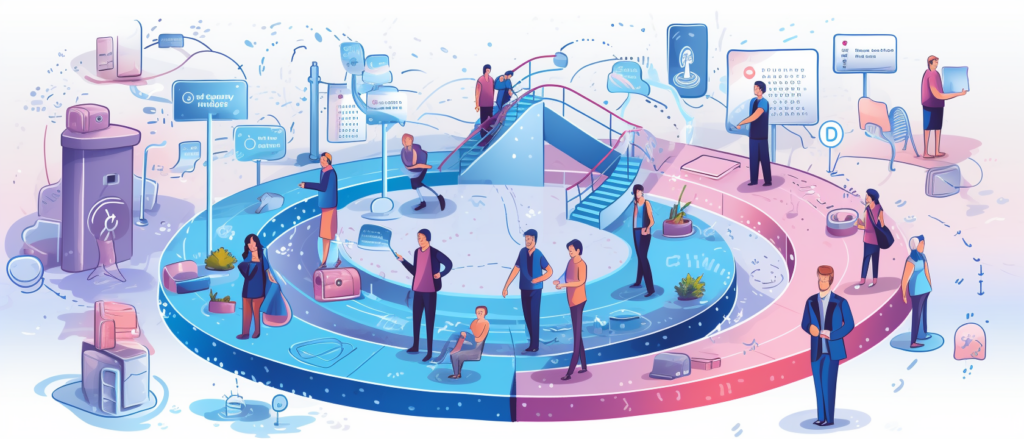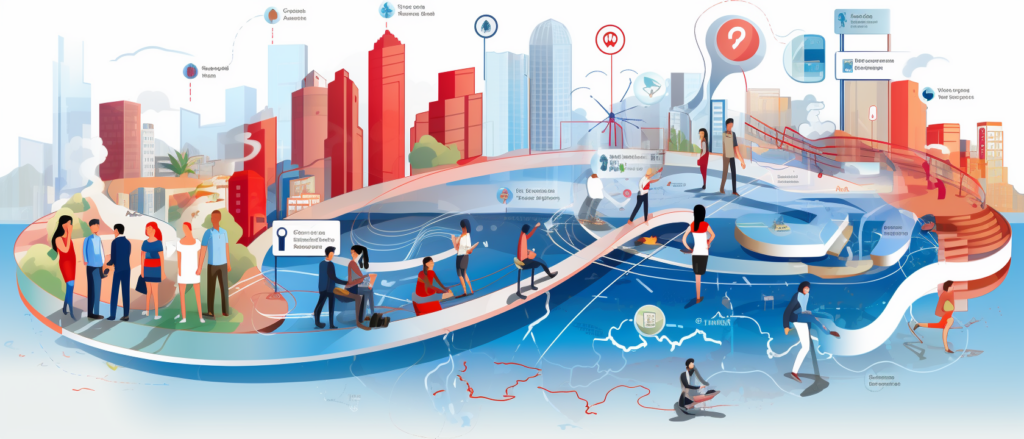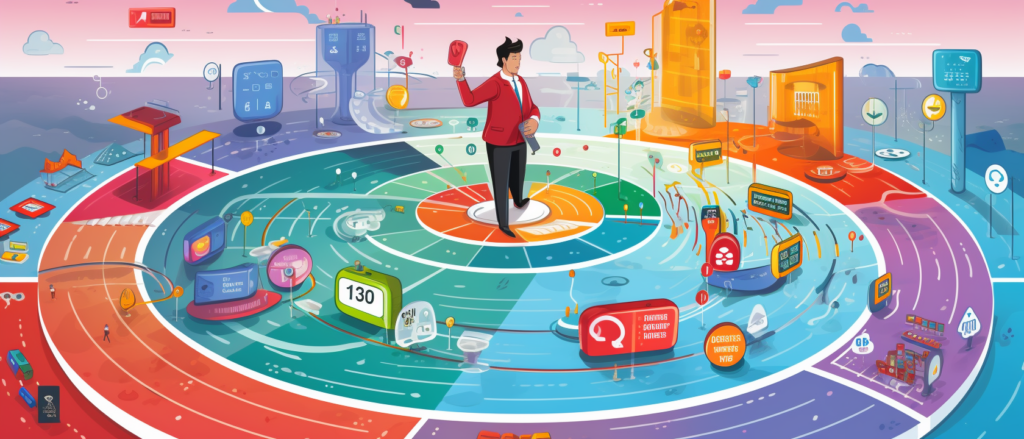Key Takeaways
✅ Page Load Time Directly Impacts User Experience and Conversion Rates: Did you know that shaving off a few seconds off your page load time could significantly boost user retention and sales? With good page load times being under 2.5 seconds, it’s clear that speed is not just a luxury, it’s a necessity. Poorly performing sites, taking over 4 seconds, risk increased bounce rates and lost revenue – no small change when considering a single second's delay could cost companies like Amazon 1% in sales!
✅ Optimizing Page Load Time Boosts SEO and Business Performance: Fast loading websites are more than user-friendly – they're Google-friendly. That's right, page load time is a crucial SEO factor that can push your rankings up or down. Case studies highlight that minute improvements can lead to monumental growth, proving that time is indeed money when web performance can lead to a significant uptick in revenue.
✅ Analyzing User Behavior and Setting Benchmarks Is Crucial for Improvement: How do you know if changes are truly making a difference? By setting benchmarks and utilizing tools like Google Lighthouse, you can measure the effectiveness of your page optimizations. Regularly monitoring these parameters ensures continuous improvement—because understanding user behavior through metrics like bounce rates and session duration is key to aligning with their needs and potentially skyrocketing your business success.
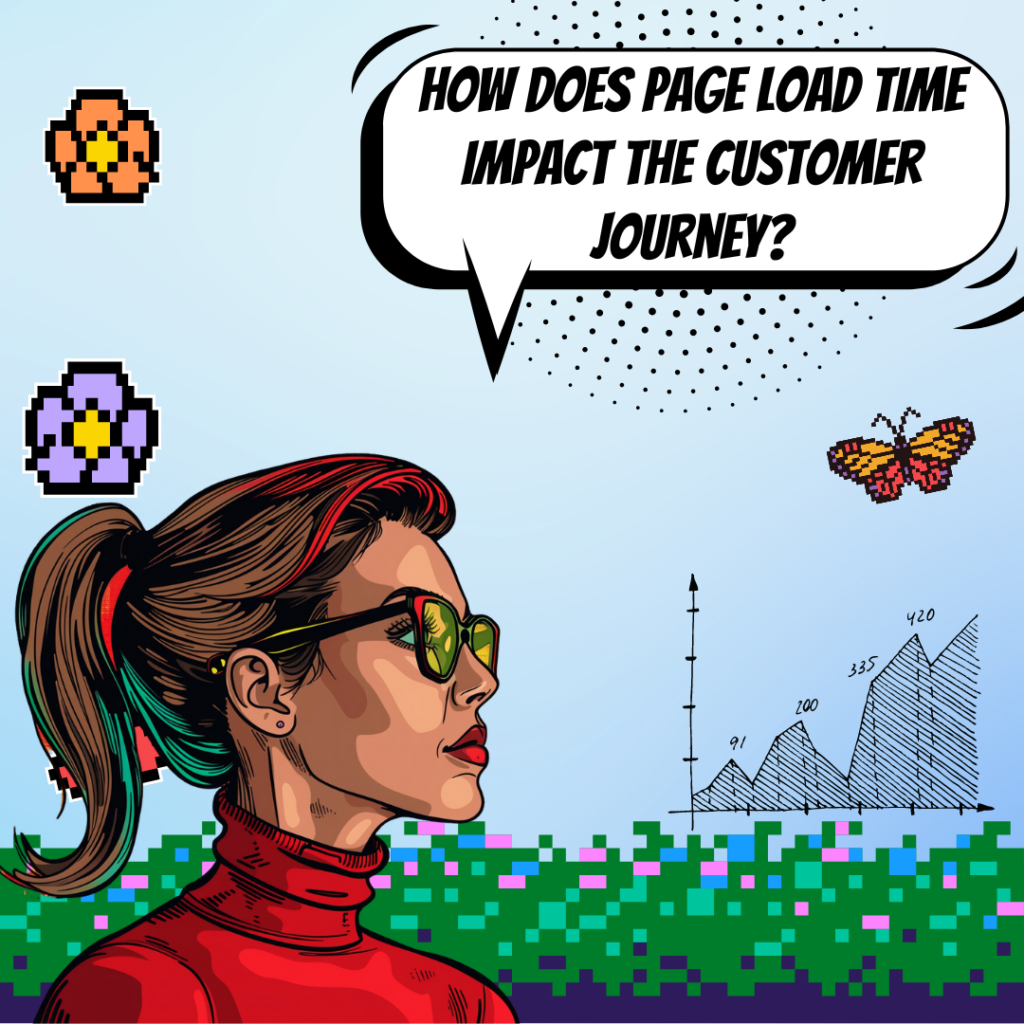
Introduction
Have you ever considered that your website might be the one thing standing between your business and your next sale? Think about it: when customers land on your site, each second matters, and so does every click. In the hustle of today's digital ecosystem, focusing on boosting your customer journey by improving page load time and analyzing user behavior is not just important; it's critical to stay ahead in the game. But how exactly do these factors reel in more sales and solidify customer loyalty?
Today's savvy business leaders and marketers are turning to innovative strategies, modern tools, and sharp insights to maximize revenue and get the best return on investment. This article isn't just a rundown of why these aspects are essential—it's a treasure trove of actionable insights and groundbreaking information that can set your brand apart. Keep reading, and you’ll unveil how meticulous attention to these elements can lead to a truly engaging customer experience, carving a path for unrivaled online success.
Top Statistics
| Statistic | Insight |
|---|---|
| Anticipating Customer Needs: 89% of successful businesses see anticipating customer needs and providing assistive experiences as key to growth. | This shows the crucial role of foresight in customer satisfaction and its direct impact on business expansion. |
| Mobile Website Traffic: 56% of all worldwide website traffic is on mobile devices. | The dominance of mobile traffic emphasizes the need for optimized and fast-loading mobile experiences. |
| Rapid Service Expectation: 72 percent of customers want immediate service. | Businesses must streamline processes to meet expectations for swift and efficient customer service. |
| Contextual Interactions: 70 percent of customers expect anyone they interact with to have full context. | This figure underscores the importance of integrated systems that provide a holistic view of customer profiles. |
| Global CX Management Market: Estimated to reach USD $11.4 billion in 2023 with an annual growth of 12.2% expected through 2028. | Such growth forecasts signal a significant shift towards prioritizing customer experience in budgets and strategies. |
Understanding the Importance of Customer Journey
The customer journey maps out the path a customer takes with a brand, from the first click to the final purchase, and even beyond. It's like a roadmap that tells us where customers might get lost or decide to take a detour. Making this trip as smooth as possible is what keeps a customer coming back for more. And let's face the facts: if a customer has a good ride, they're more likely to tell their friends about it. That's free advertising, my friends, and who doesn't love a bit of that? Additionally, understanding the customer journey helps businesses identify pain points and areas for improvement. This knowledge allows for more targeted marketing efforts and personalized customer interactions. Ultimately, a well-mapped customer journey fosters loyalty and drives repeat business.
The Impact of Page Load Time on Customer Experience
Ever clicked on a website and felt like you could take a nap waiting for it to load? That's a big no-no. Page load time is not just a number; it's the first 'hello' a website gives. Get this: data tells us that even a one-second delay can cause a 7% reduction in conversions. That doesn't sound like much, but if you're raking in $100,000 a day, that's $2.5 million in lost sales every year—all because of one tiny second. Faster load times enhance user satisfaction and reduce bounce rates. Moreover, search engines favor fast-loading sites, improving your SEO rankings. Investing in optimized load times can lead to significant long-term gains in customer retention and sales.
Analyzing User Behavior for Personalization
Getting to know what customers like and don't like isn't creepy; it's essential. Think of it like being a good host at a party. You wouldn't serve a plate of peanuts to someone who's allergic, right? By diving deep into user behavior, companies can serve up what customers are more likely to enjoy and even introduce them to something they never knew they needed. Personalization is the 'secret sauce' that can turn a one-time shopper into a brand ambassador. Advanced analytics tools can track user behavior across various touchpoints, providing insights into preferences and trends. Personalized experiences can lead to higher engagement and increased sales. The key is to use data responsibly and transparently to build trust with your customers.
Implementing Strategies for Improvement
It's one thing to know what needs fixing, it's another to roll up your sleeves and get to work. This is where the company culture shifts, putting on a customer service hat and improving every aspect of the experience. Customer feedback is like gold dust here – it's honest, it's raw, and it can lead to groundbreaking ways to boost customer satisfaction. Let's not forget about optimizing those pesky page load times and getting that content tailored—sharpish. Cross-functional collaboration is essential for implementing effective improvements. Regular training and updates ensure that all team members are aligned with customer-centric goals. Utilizing agile methodologies can help in rapidly testing and refining strategies for better results.
Measuring Success and Overcoming Challenges
So how do you know you're doing a good job? Measure, measure, and measure some more. By keeping an eye on conversion rates and customer satisfaction scores, companies can do a victory dance when things go well, or pivot when they're off track. Of course, challenges like aligning the different teams or keeping up with the latest tech will pop up, but with clear metrics in hand, any company can navigate through a storm. Regularly reviewing performance data helps in identifying trends and making informed decisions. Benchmarking against industry standards can provide a clearer picture of where you stand. Proactive problem-solving and continuous improvement are key to overcoming obstacles and achieving long-term success.
The Future of Customer Journey
The bottom line is clear: the business world is customer-led now. Those who keep their finger on the pulse of the customer journey are the ones who'll come out on top. Sure, it might mean getting comfortable with change, but for those willing to take the leap, the reward is a bunch of happy customers who are all too willing to click 'buy' again. And in the end, isn't that what it's all about? Emerging technologies like AI and machine learning will continue to revolutionize customer journey mapping. Enhanced data analytics will provide deeper insights into customer behavior and preferences. Companies that embrace these innovations will be better positioned to meet evolving customer expectations and drive sustained growth.
AI Marketing Engineers Recommendation
Recommendation 1: Optimize Page Load Speed to Reduce Abandonment Rates: Enhancing customer journey starts with ensuring that potential customers do not leave your site before they have had a chance to engage with your content. Statistics show that even a one-second delay in page response can result in a 7% reduction in conversions. In today's market, pages should load within 2-3 seconds to maintain competitive edge. Use tools like Google PageSpeed Insights to evaluate and improve your website’s load time for both desktop and mobile.
Recommendation 2: Implement Behavioral Analytics to Personalize User Experience: Analyzing user behavior has never been more integral to marketing strategy as it is today. By harnessing data from heatmaps, session recordings, and customer feedback, businesses can gain invaluable insights into user habits and preferences. Current trends indicate a shift towards a more personalized customer journey, with as many as 80% of shoppers more likely to purchase from a company that offers personalized experiences. Employ these analytics to create a tailored path for users, adapting in real time to their actions on your website.
Recommendation 3: Leverage AI-Driven Chatbots to Engage and Guide Customers: Incorporating AI technology like chatbots on your site can play a significant role in improving page load time as well as analyzing user behavior. Unlike traditional live chat systems, AI chatbots are available 24/7, can handle numerous requests simultaneously, thus lowering the load on your servers. Studies suggest that chatbots can help save up to 30% in customer support cost, while also gathering data to provide insights into customer needs leading to more effective marketing strategies. They guide users to relevant pages quickly, improving the overall user experience and satisfaction.
Relevant Links
- Take Your Brand Global with WeChat: Your Guide to Conquering the Chinese Digital Space
- Capture the Chinese Market: Strategies for Winning on Douyin and Kuaishou
- Korea's Video Marketing Secrets: Platforms and Content that Drive Engagement
- Skyrocket Your Online Sales: SEO Strategies Tailored for South Korea's E-Commerce
- Get Ahead of the Curve: Mastering Chinese Consumer Behavior Trends for 2024
Conclusion
In summing up the journey we've taken through the world of customer experience, it's clear that the roads leading to customer satisfaction are ever-evolving. When we think about what makes or breaks a digital interaction, one thing is undeniable: page load time is not just a tech issue; it's a pivotal structure in the bridge connecting customers to your business. Fast loading pages are like open highways that lead to happier travels for your customers, with every second shaved off potentially boosting trust and sales.
The path to personalization is paved with understanding and responding to user behavior. By diving into the analytics of what your customers do on your site, you equip your business with the tools to not only meet but exceed customer expectations. Think of this data as the signposts that guide your decision-making, helping to craft experiences that resonate personally with each visitor.
What's on the horizon for customer journeys? A landscape where the customer is the compass guiding every strategic move. As businesses, staying ahead means not only embracing the technology and strategies available today but also keeping an eye out for the fresh innovations of tomorrow. Improving your digital touchpoints isn't a one-time job—it's a continuous adventure. Now, consider what your next step will be. Are you ready to accelerate your customer's journey and, in doing so, race ahead of the competition? The open road awaits, and it's time to analyze, optimize, and personalize like never before.
FAQs
Question 1: What is page load time?
Answer: Page load time refers to the time it takes for a web page to fully load and become usable for a user.
Question 2: Why is page load time important?
Answer: Page load time significantly impacts user experience, conversion rates, and search engine rankings. Faster load times lead to higher engagement, lower bounce rates, and better SEO.
Question 3: What is a good page load time?
Answer: A good page load time is generally considered to be under 2.5 seconds, with 3 seconds being an acceptable score. Anything above 3 seconds increases the likelihood of visitors leaving the site.
Question 4: How does page load time affect SEO?
Answer: Page load time is a direct ranking factor in Google’s algorithm. Faster load times improve user experience, which in turn boosts search engine rankings.
Question 5: What metrics measure page load time?
Answer: Key metrics include Largest Contentful Paint (LCP), First Input Delay (FID), Interaction to Next Paint (INP), and Time to First Byte (TTFB).
Question 6: How can I measure page load time?
Answer: Tools like Google PageSpeed Insights, DebugBear Speed Test, and synthetic monitoring tools can be used to measure page should tell us about what's under the hood and when we might need a tune-up.
Question 7: How can I optimize page load time?
Answer: You can optimize page load time by reducing image sizes, minimizing HTTP requests, using efficient caching, and improving server response times.
Question 8: What are the consequences of slow page load times?
Answer: Slow load times lead to higher bounce rates, lower conversion rates, and decreased user engagement.
Question 9: How can I monitor page load time over time?
Answer: To keep a watchful eye on your page load time, you can use tools like DebugBear, which not only measure but continuously monitor performance and send you alerts if things start to slow down.
Academic References
- Google, Inc. (2018). The need for mobile speed: How mobile latency impacts publisher revenue. https://www.doubleclickbygoogle.com/, Retrieved 2020-09-01. This comprehensive report underscores the critical importance of page loading times, particularly on mobile devices, and its direct correlation with revenue impact for publishers.
- Website Builder Expert. (2020). Website Builder Performance. https://www.websitebuilderexpert.com/, Retrieved 2020-09-01. This extensive analysis of 400 websites provides insightful benchmark data on the variability in page load times across different website builders, emphasizing the critical role of platform choice in website performance.
- Kissmetrics Blog. How Loading Time Affects Your Bottom Line. https://blog.kissmetrics.com, Retrieved 2020-09-01. A blog post that presents eye-opening statistics on how user engagement and conversion rates plummet with each extra second of page loading time, making a case for optimizing website speed.
- Lighthouse. Lighthouse. https://developers.google.com/web/tools/lighthouse. This official documentation of Google Lighthouse provides guidance on auditing web pages' performance, accessibility, and search engine optimization, among others, which is instrumental for developers to improve user experience.
